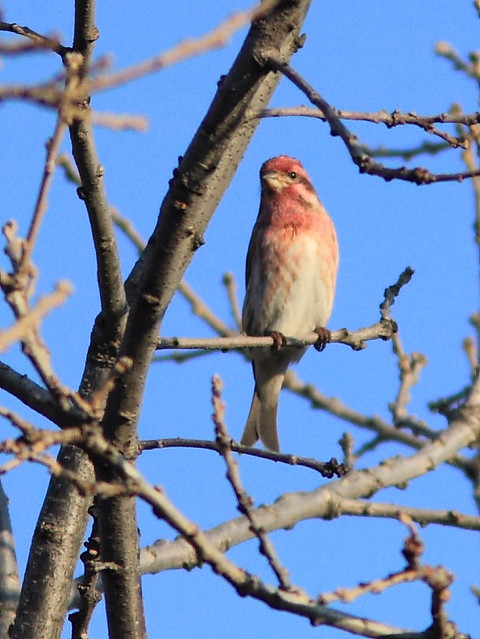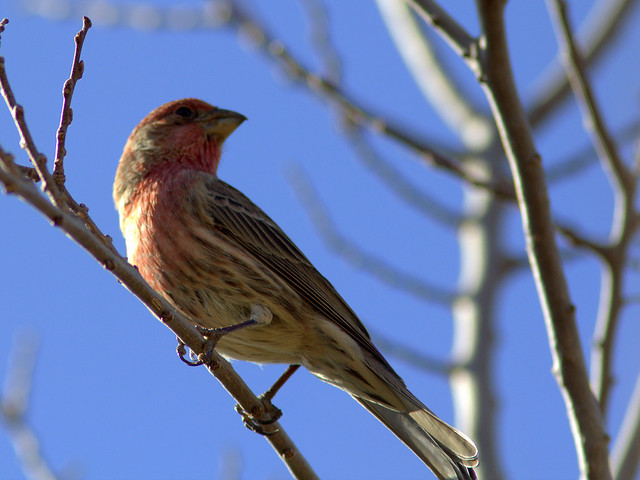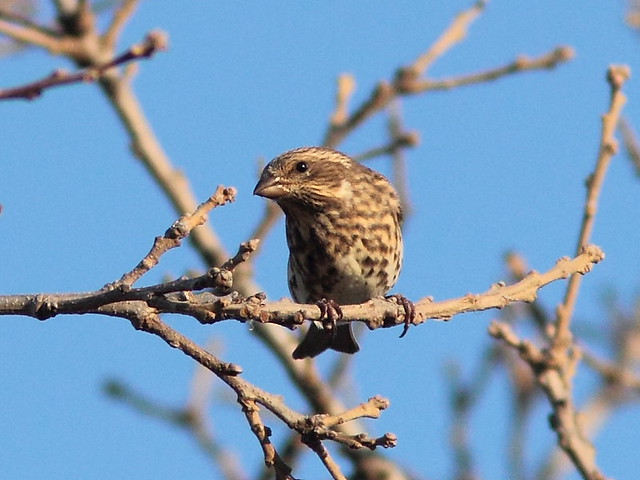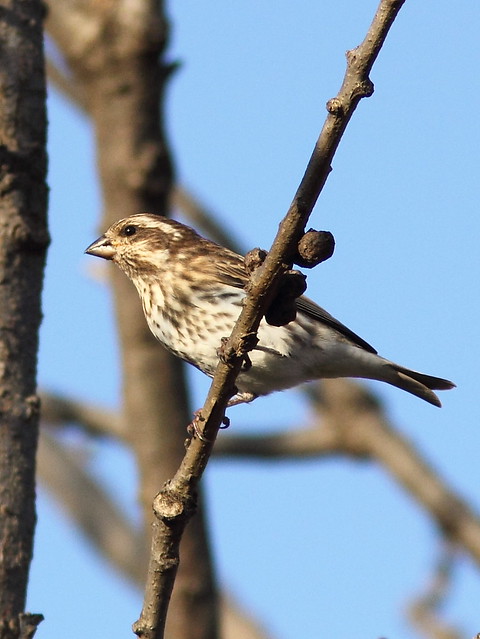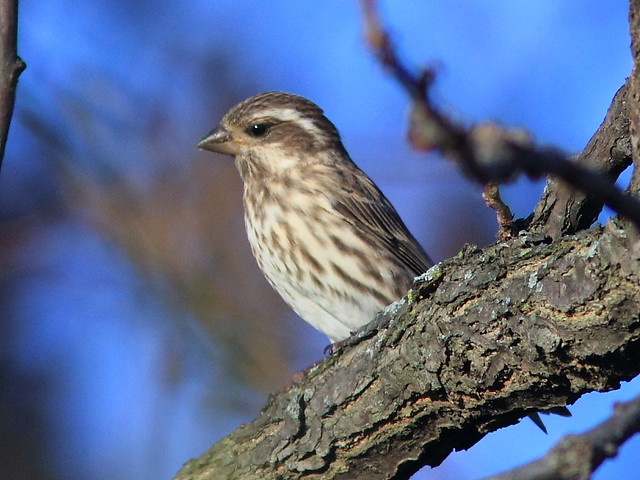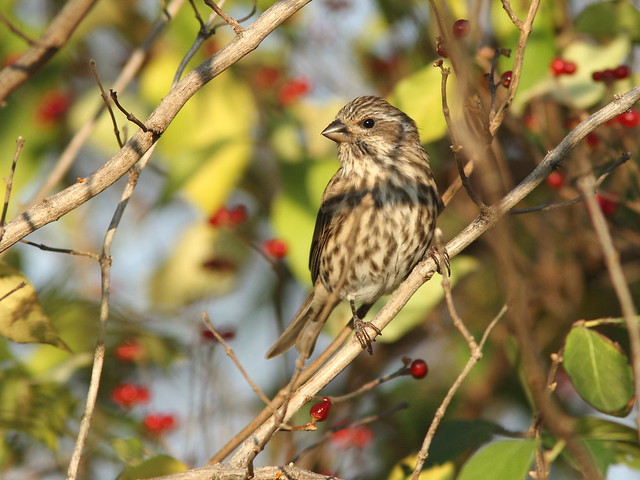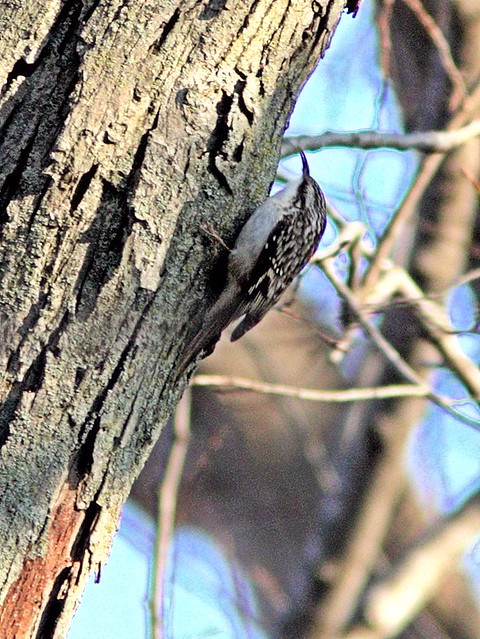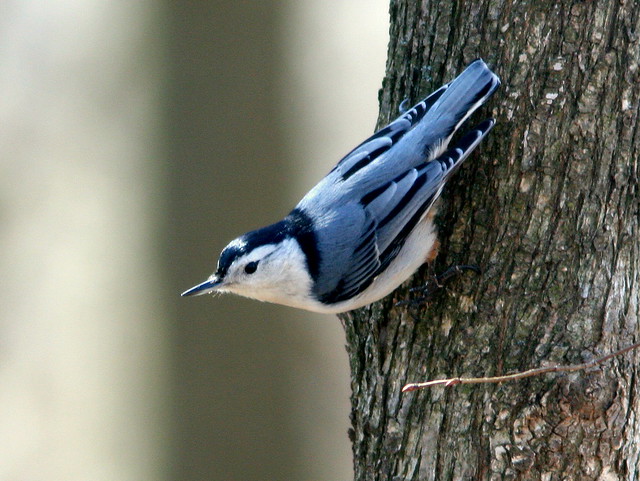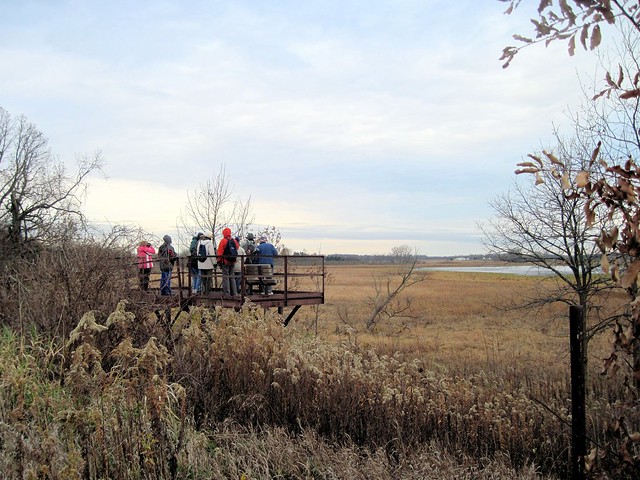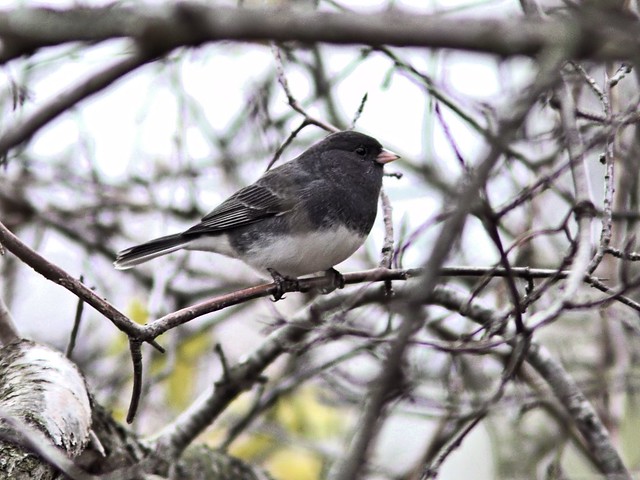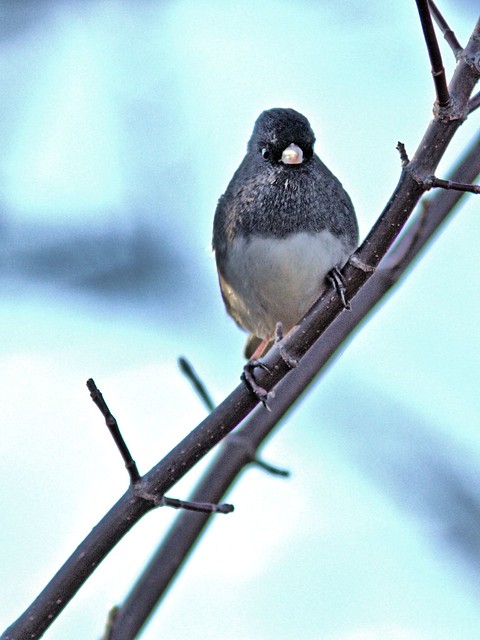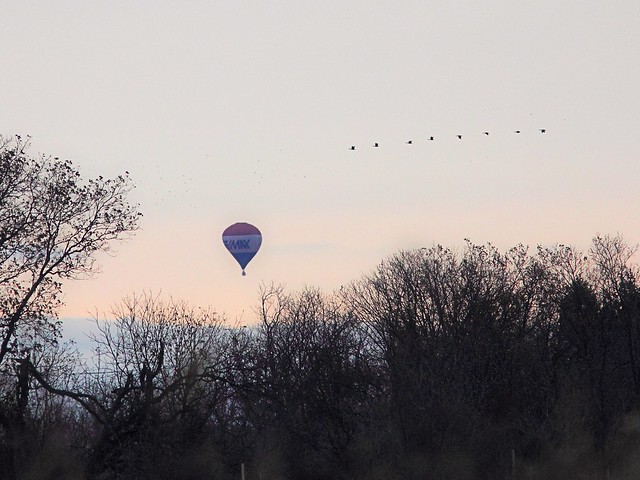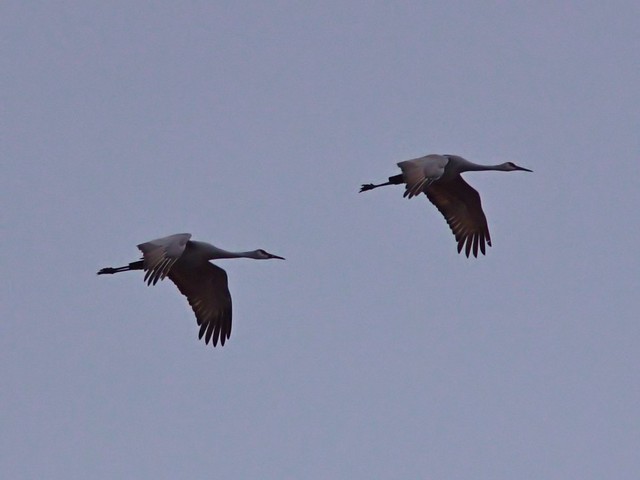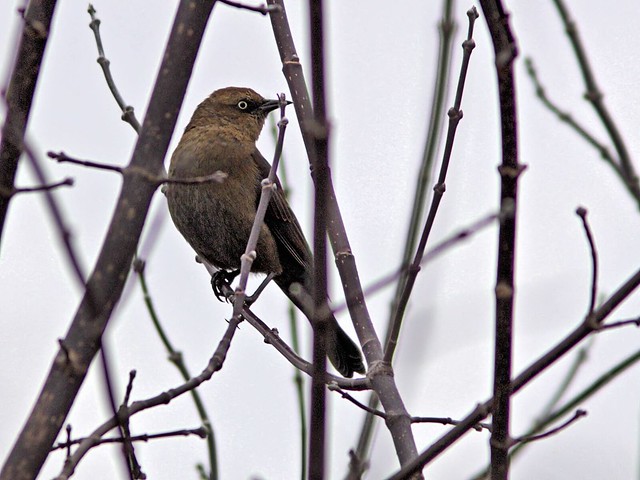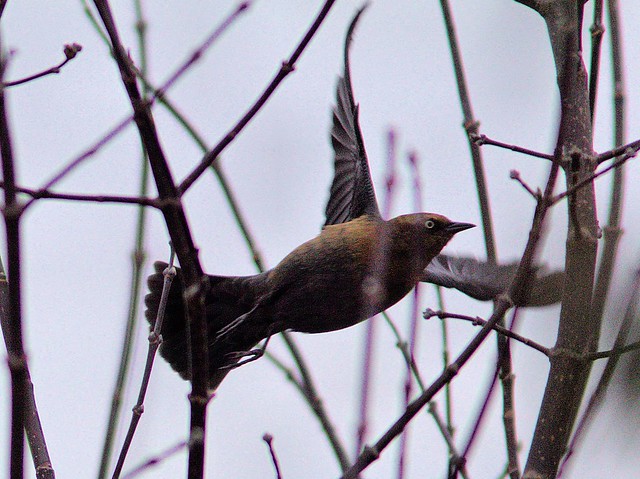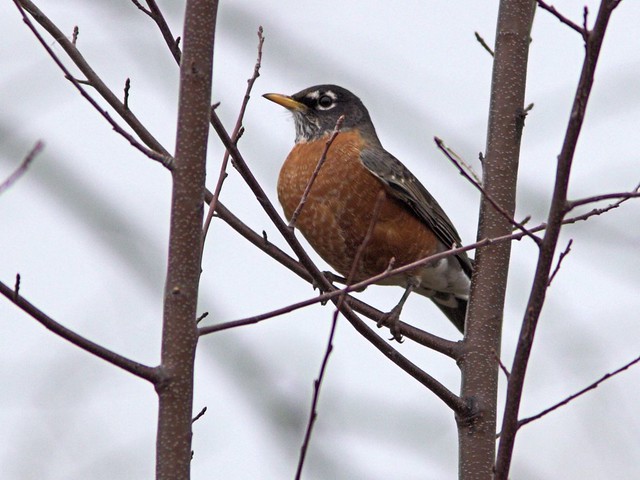Posted by: Ken @ 6:10 am
Hurricane Sandy brushed by a couple of days after our departure, but otherwise we picked a terrible time to leave south Florida! The low temperatures at our Florida home are finally dipping to around 60 degrees (F), about 20 degrees warmer than the daily highs in Chicagoland.
On our first morning upon returning to our Illinois condo, Mary Lou and I got out early to the east side of nearby Nelson Lake/Dick Young Kane County Forest Preserve. We immediately encountered a flock of 20+ Purple Finches that ranged in the woodlands at the lake’s eastern edge. Only one or two were in adult male plumage. It was this fall’s first reported sighting of the northern species at Nelson Lake.
They bear some resemblance to the common resident House Finches (photos below), a few of which joined the Purple Finches. Note that the upper edge of this House Finch’s bill (the culmen) curves down slightly, parrot-like. It also has shorter wings, less pronounced facial markings, darker streaks on its breast, and a shorter tail that is not notched as strongly as that of the more robust Purple Finch.
Here is another House Finch, showing how the red color of its forehead and breast has an orange tint (”brick colored”) while that of the Purple Finch looks richer rosy-pink or purple and suffuses its head and upper back and chest (as if dipped head first in raspberry juice).
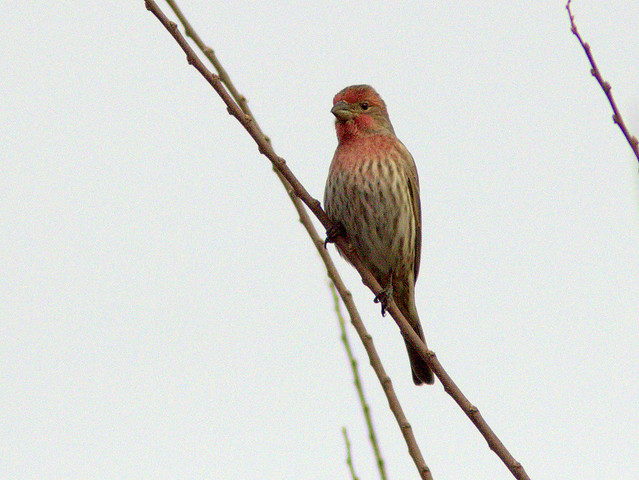
The other Purple Finches were brown females and hatch-year males. They are boldly streaked and exhibit a bright white line over their eyes and a straight culmen.
Several remained at close range as they feasted on berries.
For comparison, here is a photo of a female House Finch. Its face is noticeably plain and its streaks are less well-defined against a grayish background.
A Brown Creeper worked its way methodically up the trunk of a tree.
In typical fashion, the creeper flew to the bottom of an adjacent tree and again moved upward, while a White-breasted Nuthatch (”upside-down bird”) tended to do the opposite. Between the two species, both the upper and lower areas of the crevices in the bark are more thoroughly gleaned.
The first Saturday of each month is “Scope Day” a Nelson Lake. Despite freezing temperatures, about a dozen birders showed up. The lake shore usually extends much more closely to the viewing platform, but this year’s drought has taken a toll.
It was nice seeing (Slate-colored subspecies) Dark-eyed Juncos, hardy little winter visitors who do not make it down to south Florida. This one seemed to have indistinct wing bars, suggesting it might have some of the White-winged subspecies in its lineage.
Fox Sparrows were present in good numbers, many of them singing as if it were spring.
We saw a flock of seven unidentified swans, but they disappeared behind the trees before I could raise my camera. Canada Geese flew across the same area of sky. A hot air balloon added interest to the scene.
I also captured a pair of distant Sandhill Cranes in flight.
Hundreds of Common Grackles and other blackbirds, mostly Red-winged, flew overhead. Among them could be heard the calls of Rusty Blackbirds, a species I had seen before but never photographed. Luckily, a flock settled in a nearby tree, and I could pick out a few of the brownish Rusty species. They are slightly larger and have longer tails and more slender bills than Red-winged Blackbirds, but are smaller than grackles. Their pale eyes contrast with their dark faces.
A species of conservation concern, the Rusty Blackbird population is declining. There is no clear explanation as to why their numbers have significantly decreased 90% over the past 30 years, both in their breeding grounds in far northern boreal forests and in their winter range. Theories about the cause of the drop in population include destruction of winter and or breeding habitat and acid rain (read more here). Even though they associate with the Red-winged species, the Rusty Blackbirds often stay slightly away from their relatives, making them stand out.
It’s always nice to see American Robins, as they do not nest in south Florida and only show up there irregularly during the winter.
The past two weeks have been very eventful here in Illinois, limiting our time afield (as well as computer face time). Our son-in-law was deer hunting in North Carolina and fell as he was climbing into a tree stand. He broke bones in both legs and after he was stabilized was flown back to Illinois. Since he fell from a height of 20 feet, he is lucky that he landed on his feet rather than his head or back, as he could have been paralyzed or killed. He needed surgery (ten screws, two pins, a metal plate and cadaver bone transplants) on both legs and got out of the hospital only yesterday. We have been busy minding our two granddaughters.
We are looking forward to our return to Florida, where our local pair of Bald Eagles is preparing to start a family. Here is one of the pair that I photographed last breeding season.













